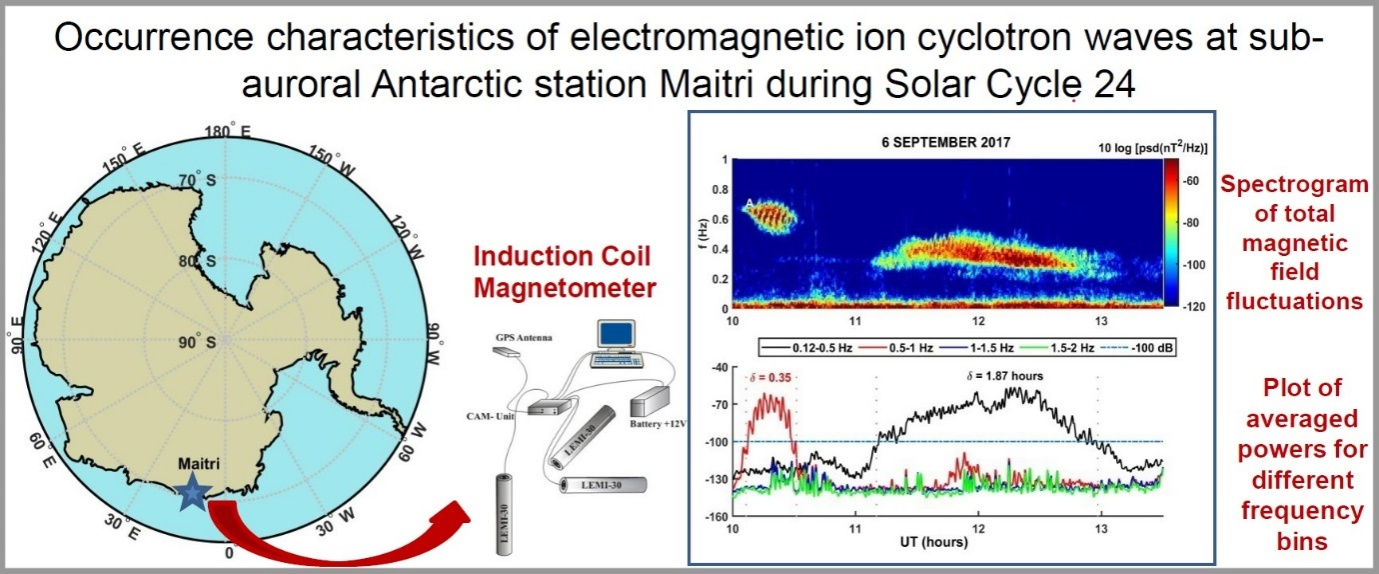Electromagnetic Ion Cyclotron (EMIC) Waves
18-04-2023
1 min read

Overview:
Recently, a team of scientists from the Indian Institute of Geomagnetism (IIG), analysed data collected by the Induction Coil Magnetometer data, installed at the Indian Antarctic station Maitri to bring out several aspects of the ground observation of the Electromagnetic Ion Cyclotron (EMIC) waves.
About Electromagnetic Ion Cyclotron (EMIC) waves:
- These are the discreet electromagnetic emissions observed in the Earth's magnetosphere.
- These waves are generated in the equatorial latitudes and propagate along magnetic field lines to their footprint in the high-latitude ionosphere.
- Their signatures can be recorded in both spaces as well as ground-based magnetometers.
- These waves are higher during magnetically disturbed days (53.1%) as compared to quiet days (41.1%).
- The dependence of EMIC occurrence on solar flux is evident and they are more frequent during the descending phase of the solar cycle.
- The interesting observational feature is the peak occurrence of EMIC in the noon-dusk sector, which is attributed to the presence of plasma plumes at that time in the Earth's magnetosphere.

What is Magnetosphere?
- A magnetosphere is that area of space, around a planet, that is controlled by the planet's magnetic field.
- Earth has the strongest one of all the rocky planets.
- Earth's magnetosphere is a vast, comet-shaped bubble, which has played a crucial role in our planet's habitability.
- The Earth's magnetosphere is a highly dynamic structure that responds dramatically to solar variations.
- It is generated by the convective motion of charged, molten iron, far below the surface of Earth's outer core.
- The magnetosphere shields the earth from solar and cosmic particle radiation, as well as erosion of the atmosphere by the solar wind
Q1) What is Radiation?
Radiation is the energy that is transmitted in the form of waves or particles through space or through a material medium. There are several different types of radiation, including electromagnetic radiation (such as radio waves, microwaves, infrared radiation,etc) and particle radiation (such as alpha particles, beta particles, and neutrons).
